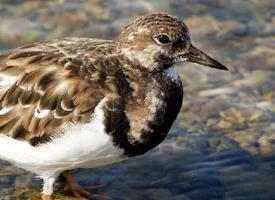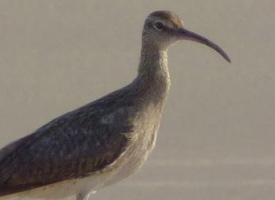
Állatleírás
The Greater Yellowlegs (Tringa melanoleuca) is a strikingly elegant shorebird that graces the wetlands and waterways of North America. This species belongs to the sandpiper family, Scolopacidae, and is easily identifiable by its long, slender legs that sport a vivid yellow color, from which it derives its common name. These vibrant legs not only add a splash of color to the bird's overall appearance but also play a crucial role in its feeding behavior and habitat selection.Adult Greater Yellowlegs typically measure between 29 to 40 centimeters in length, with a wingspan that can extend up to 61 centimeters, making them one of the larger members of the genus Tringa. They possess a slender, streamlined body that is well-adapted to their semi-aquatic lifestyle. The plumage of the Greater Yellowlegs is predominantly gray and white, with intricate patterns of bars and spots that provide excellent camouflage against the marshy landscapes they inhabit. During the breeding season, their plumage becomes slightly more vivid, with the grays turning darker and the patterns becoming more pronounced, aiding in their courtship displays.
One of the most distinctive features of the Greater Yellowlegs, apart from its colorful legs, is its long, straight bill, which is slightly upturned at the end. This adaptation is perfect for probing into mud and shallow waters, allowing them to snatch up a variety of prey such as insects, small fish, crustaceans, and other aquatic invertebrates. Their feeding strategy often involves a mix of standing still and waiting for prey to come close, as well as actively chasing down meals in shallow waters.
Greater Yellowlegs are highly migratory birds, breeding in the boreal forests and marshes of Canada and the northern United States during the summer months. Their nests are simple depressions on the ground, often hidden among vegetation, where they lay a clutch of typically four eggs. Both parents are involved in raising the offspring, protecting them fiercely from predators and guiding them to feeding areas.
In the winter, these birds migrate to the southern United States, Central America, and South America, where they can be found along coastlines, in estuaries, and in wetlands. The adaptability of the Greater Yellowlegs to different aquatic environments is a testament to their resilience and versatility as a species.
Greater Yellowlegs are known for their loud, piercing calls, which are often heard before the bird is seen. These calls serve as alarms, communication between individuals, and as part of their mating rituals. The vocal nature of the Greater Yellowlegs is just one aspect of their complex social behavior, which also includes intricate displays of dominance and courtship.
Despite facing threats from habitat loss and degradation, the Greater Yellowlegs remains relatively widespread and is listed as Least Concern by the International Union for Conservation of Nature (IUCN). However, like many migratory birds, they depend on a network of habitats along their migration routes, making the conservation of wetlands and natural spaces crucial for their continued survival.
In conclusion, the Greater Yellowlegs is a fascinating and beautiful bird, emblematic of the rich biodiversity found in North America's wetlands. With its elegant appearance, intriguing behaviors, and the melodious calls that echo across its habitats, the Greater Yellowlegs captures the imagination of birdwatchers and nature enthusiasts alike, serving as a reminder of the importance of conserving the natural world.
Hasonló állatok
Új állatfotók
Top 10 állat
- Dolphin gull (Leucophaeus scoresbii)
- Japanese macaque (Macaca fuscata)
- Stone loach (Barbatula barbatula)
- Russian tortoise (Testudo horsfieldii)
- Galápagos tortoise (Geochelone nigra complex)
- Greek tortoise (Testudo graeca)
- Diana monkey (Cercopithecus diana)
- Common flying dragon (Draco volans)
- Moustached guenon (Cercopithecus cephus)
- Galápagos penguin (Spheniscus mendiculus)


